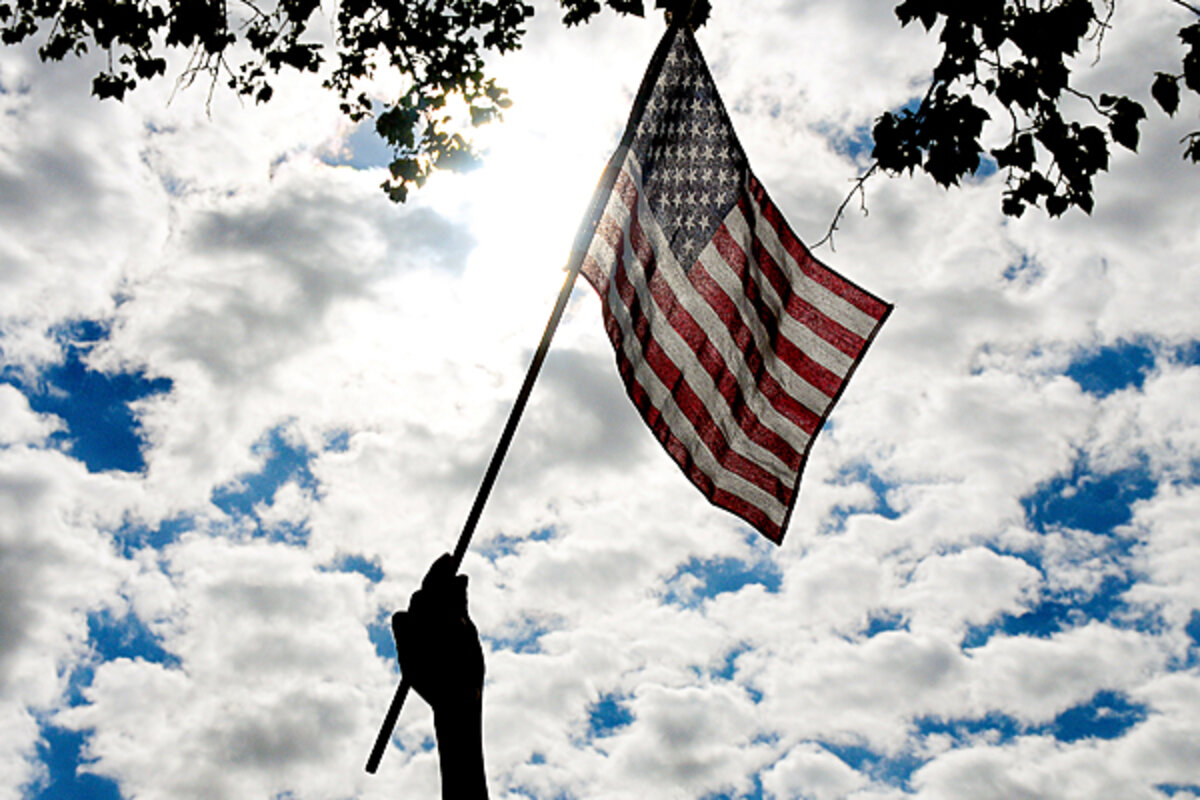Can students be barred from wearing patriotic clothes? Dispute goes to court.
Loading...
| Atlanta
The right of American students to wear to school patriotic clothing – or just an image of the US flag – is at the core of a volatile constitutional case going in front of the Ninth Circuit Court of Appeals in San Francisco on Thursday.
On May 5, 2010, Live Oak High School officials in Morgan Hill, Calif., told three students to go home after they refused to turn their US flag-themed T-shirts inside out during Cinco de Mayo, the celebration of a Mexican battle victory over France. Administrators cited lingering racial tensions at the school between Hispanics and Anglos dating back to the previous year’s Cinco de Mayo celebration.
In their lawsuit, the students – listed as D.M., M.D., and D.G. – contend that there’s no evidence that the T-shirts had sparked any disruptions and that “American schools cannot logically ban the American flag for any duration or reason.”
Not surprisingly, the decision to send the students home for wearing the national flag generated outrage and wall-to-wall media coverage, touching a raw nerve in a country riven by, among other things, the immigration debate and the rise of the tea party, a patriotic conservative grass-roots movement.
But to constitutional scholars and First Amendment experts, the case presents a broader test of the courts’ traditional deference toward schools. It also involves the notion of “the heckler’s veto,” or the ability of government to suppress rowdy speech that it believes could spark violence or suppress the free speech of others.
Moreover, the case touches on the “viewpoint neutrality” principle – where the state, at least technically, is not allowed to discriminate against particular viewpoints, even ones that some people find offensive or distasteful.
“The real oddity of this is that students wearing the same T-shirt on Memorial Day would be applauded, which makes it pretty tough on administrators to divine whether an American flag T-shirt is subversive or patriotic,” says Ken Paulson, former editor in chief of USA Today and now president of the First Amendment Center in Nashville, Tenn.
The students lost the first round, when a US district judge ruled that school officials were within their rights to send the students home. Judge James Ware cited concerns where the flag-wearing Anglo students could be in danger of attack from angry Hispanic students.
“Although no school official can predict with certainty which threats are empty and which will lead to true violence, the Court finds that these school officials were not unreasonable in forecasting that the Plaintiffs’ clothing exposed them to significant danger,” Judge Ware wrote.
Ware, who is now retired, also noted that "our Constitution grants public school children only limited First Amendment rights when they enter the schoolhouse gates." But he also acknowledged that the Live Oak High School case enters "important legal territory."
Yet the Ninth Circuit may have a different view, legal scholars say.
“It will be interesting to see whether the 9th Circuit panel will view the case as one of appropriate school judgment, and defer to school officials’ expertise, or will see it as a classic example of a censorial overreaction,” writes David L. Hudson on the First Amendment Center website.
In their lawsuit, the students dismiss the idea that the T-shirts posed the threat of violence or disruption, largely because the students had been in school that day for more than three hours and there had been no reports of problems. They also dismissed attempts to draw parallels to the banning of Confederate flag symbols by some schools, saying the US flag is viewed far differently.
But even if the T-shirts had sparked a reaction, that shouldn’t automatically prompt an administration crackdown, other scholars suggest.
“The fact is, in political speech, you get hecklers because political speech riles people up, but that’s not the same as violence,” says Trevor Burrus, a research fellow at the Cato Institute’s Center for Constitutional Studies in Washington. “Schools should allow students to be riled up and have conversations about what’s around them. The other concern here is that the modern liberal school system is based more on the ‘no one should ever be offended’ doctrine rather than the ‘robust political speech’ doctrine.”
The US Supreme Court has ruled that students have a diminished First Amendment right in school, which is one reason that principals, for example, are allowed to edit or even censor school newspapers. At the same time, the Ninth Circuit may well have to take a look at the Supreme Court’s Tinker v. Des Moines Independent Community School District ruling from 1969.
In that case, it was a national debate about the Vietnam War that brought on a crackdown by school officials against students wearing black armbands in protest of the war. The court ruled that administrators could not censor student protests because there was no evidence of a major disruption, or even a reasonable forecast of anything happening.
Since then, however, the Supreme Court has shown less interest in narrowing the ability of “good faith” state actors – from principals to prison wardens – to impose order.
“In [the Live Oak High School] case, let’s be clear: School officials are just trying to educate students and have as few headaches as possible, which courts view [sympathetically],” says Mr. Paulson of the First Amendment Center. “But imagine instead if a school encouraged everybody to post a political message on their T-shirt. I think they’d be applauded for their innovation and for creating a marketplace of ideas – that it’s OK to have ideas and it’s OK to have different opinions.”





